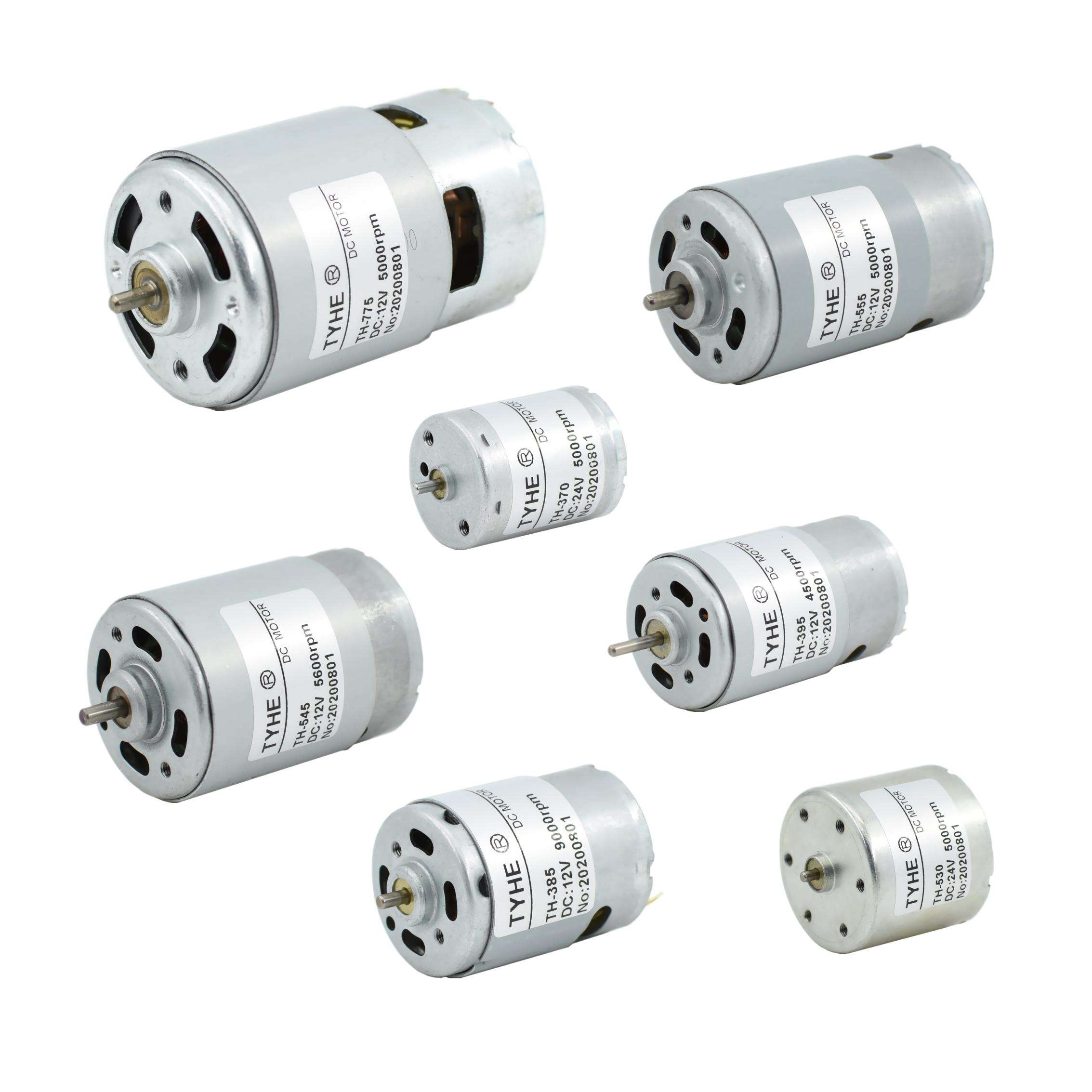Maximizing Performance Through Proper Motor Care
The longevity and efficiency of a small dc motor largely depend on how well it's maintained. These compact powerhouses drive countless applications in both industrial and consumer devices, from robotics to home appliances. Understanding proper maintenance techniques not only extends the motor's lifespan but also ensures optimal performance throughout its operational life.
Today's manufacturing processes rely heavily on small dc motor systems, making their maintenance crucial for continuous operations. When properly cared for, these motors can provide years of reliable service while maintaining their energy efficiency and output consistency. Let's explore comprehensive maintenance strategies that will help protect your investment and ensure smooth operations.
Fundamental Maintenance Practices
Regular Inspection Protocols
Establishing a systematic inspection routine is vital for identifying potential issues before they escalate. Begin by examining the small dc motor housing for signs of physical damage or excessive vibration. Check mounting brackets and fasteners for proper tightness, as loose components can lead to misalignment and accelerated wear.
Visual inspections should include checking the commutator and brush assemblies for wear patterns and proper contact. Look for any discoloration that might indicate overheating or electrical issues. Document any unusual sounds, smells, or vibrations during operation, as these can be early warning signs of developing problems.
Cleaning and Dust Prevention
Dust and debris are major enemies of small dc motor performance. Implement regular cleaning schedules using appropriate methods such as compressed air or specialized electronic cleaning solutions. Focus particularly on ventilation ports and cooling fins, as these areas often accumulate debris that can impede proper heat dissipation.
Consider installing protective covers or filters in dusty environments to minimize particulate intrusion. When cleaning, avoid using harsh chemicals that might damage the motor's insulation or components. Always ensure the motor is completely dry before returning it to service.

Performance Optimization Techniques
Temperature Management
Maintaining optimal operating temperature is crucial for small dc motor efficiency. Monitor the motor's temperature during operation using appropriate tools such as infrared thermometers or thermal imaging devices. Ensure proper ventilation around the motor and address any unusual heat patterns promptly.
Consider implementing additional cooling mechanisms in high-demand applications. This might include auxiliary fans, heat sinks, or improved airflow design in the surrounding enclosure. Regular temperature monitoring can help prevent thermal stress and extend the motor's operational life.
Load Balancing and Alignment
Proper alignment and balanced loads are essential for smooth operation. Check shaft alignment regularly and adjust as needed to prevent unnecessary stress on bearings and other components. Use appropriate tools to measure and correct any misalignment, as even slight deviations can impact performance.
Monitor the load characteristics to ensure they remain within the motor's design specifications. Overloading can lead to excessive heat generation and premature wear. Implement proper start-up procedures to minimize inrush current and mechanical stress during motor activation.
Preventive Maintenance Schedules
Component Replacement Guidelines
Develop a proactive replacement schedule for wear items such as brushes, bearings, and seals. Monitor these components' condition and replace them before they fail to prevent unexpected downtime. Keep detailed records of replacement dates and observed wear patterns to optimize maintenance intervals.
Stock critical spare parts based on historical wear patterns and manufacturer recommendations. This ensures quick replacement when needed and minimizes operational disruptions. Consider the environmental conditions and duty cycle when establishing replacement intervals.
Lubrication Management
Proper lubrication is vital for any small dc motor with serviceable bearings. Use only manufacturer-recommended lubricants and follow specified quantities and intervals. Over-lubrication can be as harmful as under-lubrication, so maintain accurate records of lubrication services.
Monitor bearing noise and temperature to gauge lubrication effectiveness. Implement proper procedures for lubricant storage and handling to prevent contamination. Consider using automated lubrication systems for critical applications where consistent lubrication is essential.
Troubleshooting and Diagnostics
Performance Testing Methods
Regular performance testing helps identify potential issues before they become serious problems. Measure key parameters such as current draw, speed stability, and starting characteristics. Compare these measurements against baseline data to track performance trends over time.
Use appropriate testing equipment and procedures to ensure accurate results. Document all test results and maintain historical records for trend analysis. This data can be invaluable for predicting maintenance needs and optimizing operational parameters.
Common Problem Resolution
Develop standardized procedures for addressing common small dc motor issues. Train maintenance personnel in proper diagnostic techniques and repair procedures. Document successful resolution methods for future reference and training purposes.
Maintain a database of common problems and their solutions to speed up troubleshooting processes. Consider implementing predictive maintenance technologies such as vibration analysis or current monitoring to detect potential issues early.
Frequently Asked Questions
How often should I clean my small dc motor?
Clean your small dc motor at least every three months in normal operating conditions, or more frequently in dusty environments. Regular cleaning helps prevent debris accumulation and ensures proper cooling, which is essential for optimal performance and longevity.
What signs indicate that my small dc motor needs maintenance?
Watch for unusual noise, excessive vibration, reduced performance, overheating, or irregular starting behavior. These symptoms often indicate the need for maintenance attention. Regular monitoring of these indicators helps prevent unexpected failures.
Can I perform maintenance on a small dc motor myself?
Basic maintenance tasks like external cleaning and visual inspections can be performed by users with proper training. However, internal maintenance, repairs, or modifications should be handled by qualified technicians to ensure safety and preserve warranty coverage.

